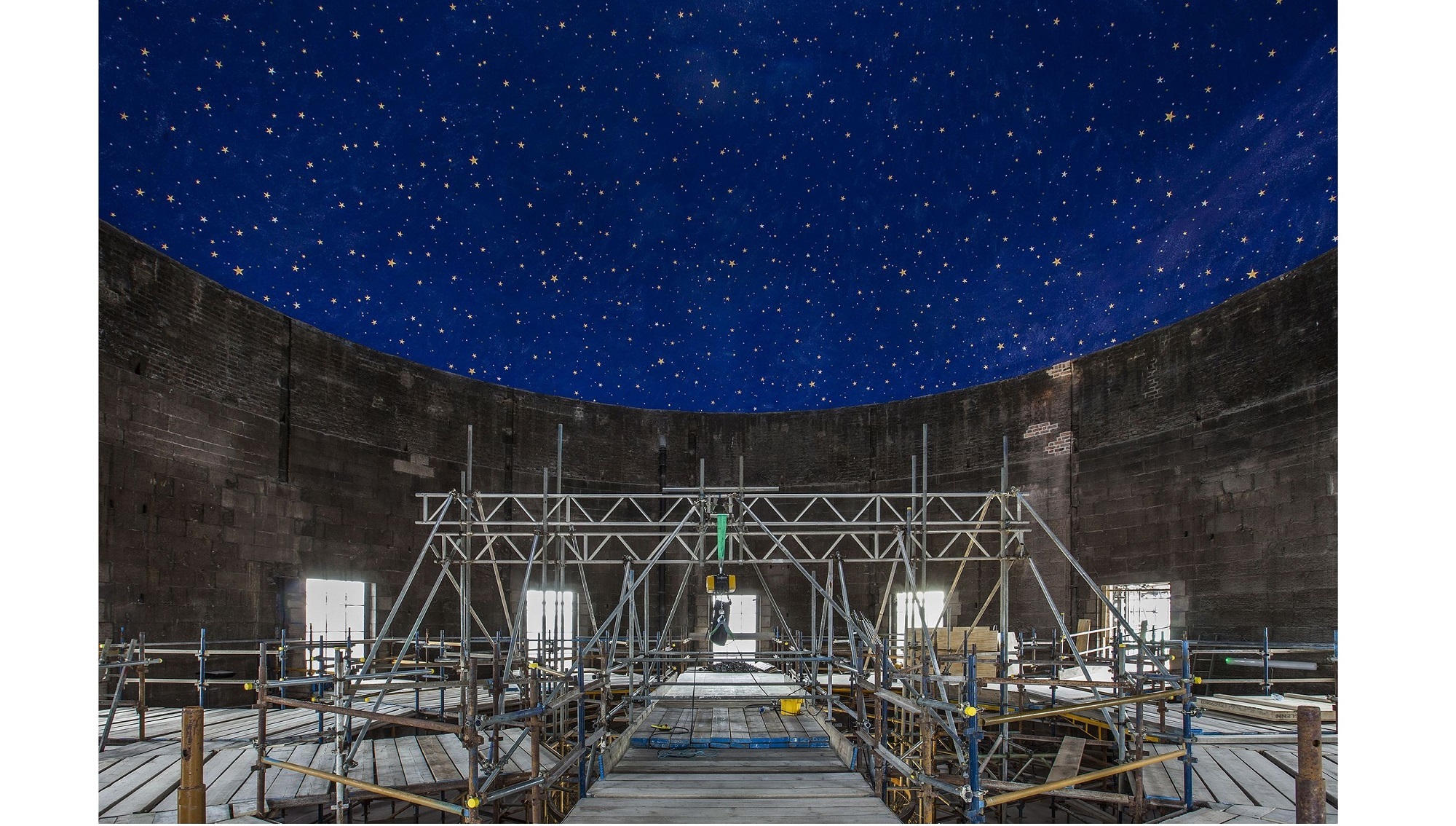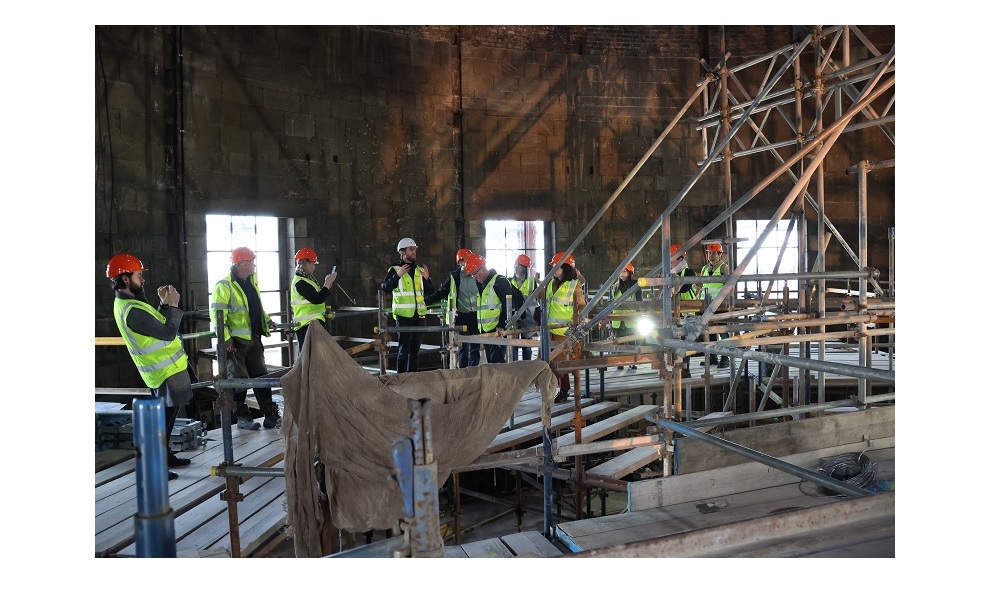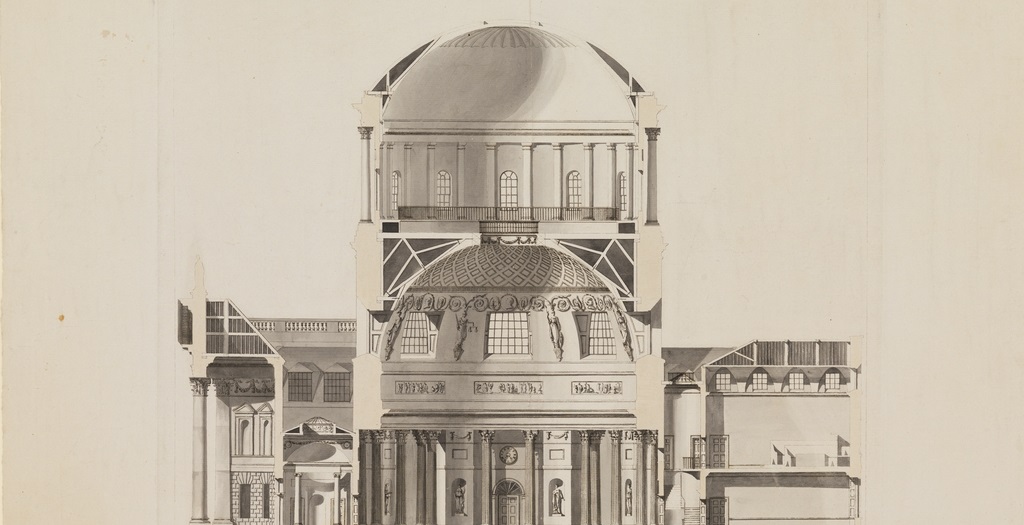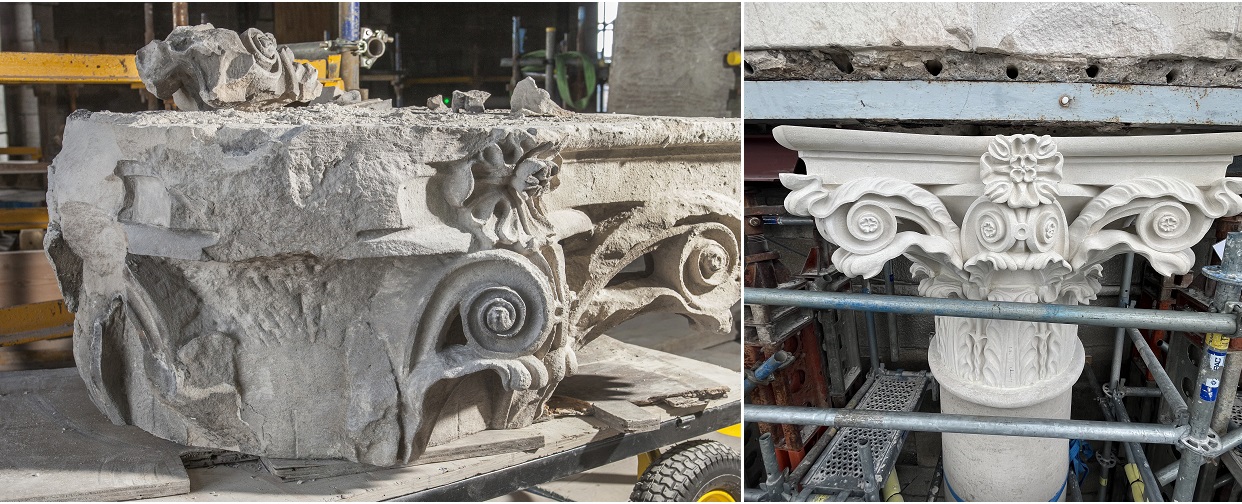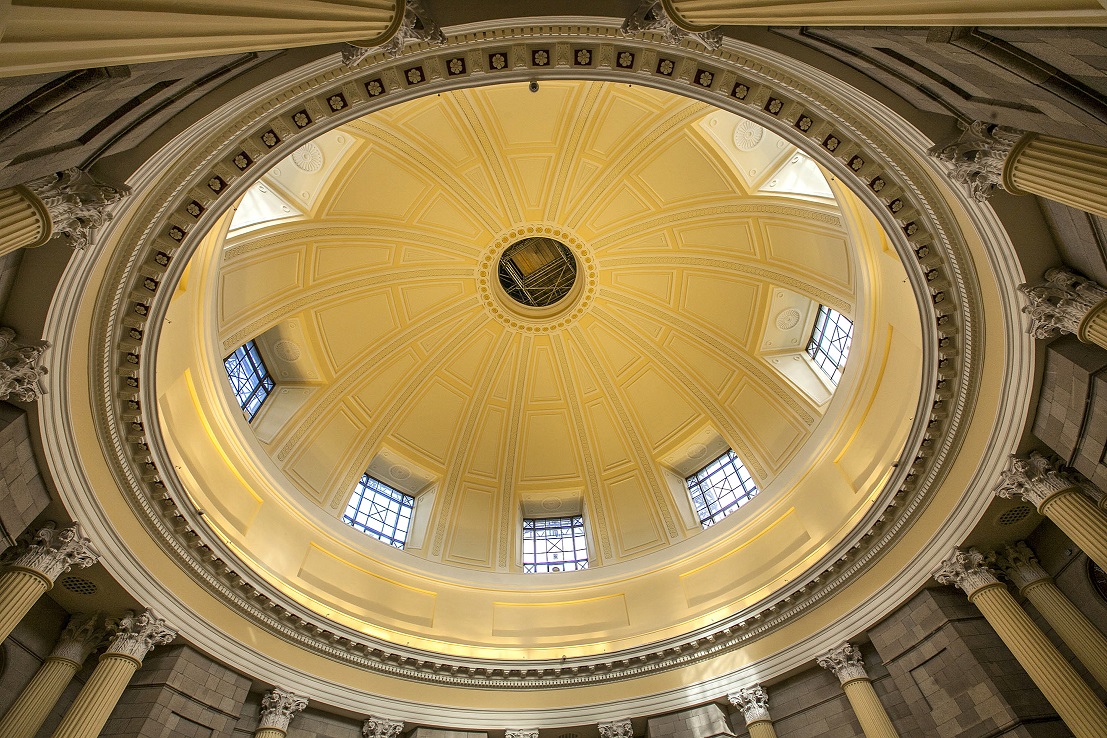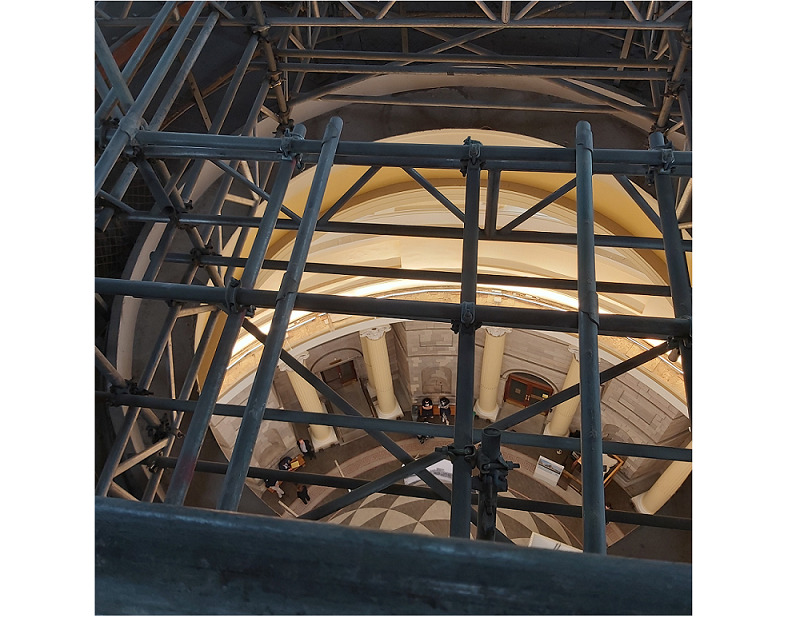The lower and upper domes are visible in James Gandon's designs (image courtesy Irish Architectural Archive).
The space between the domes was originally used to store records that eventually became a weight hazard and were moved to the Public Records Office, and is where visitors can be taken on site visits.


